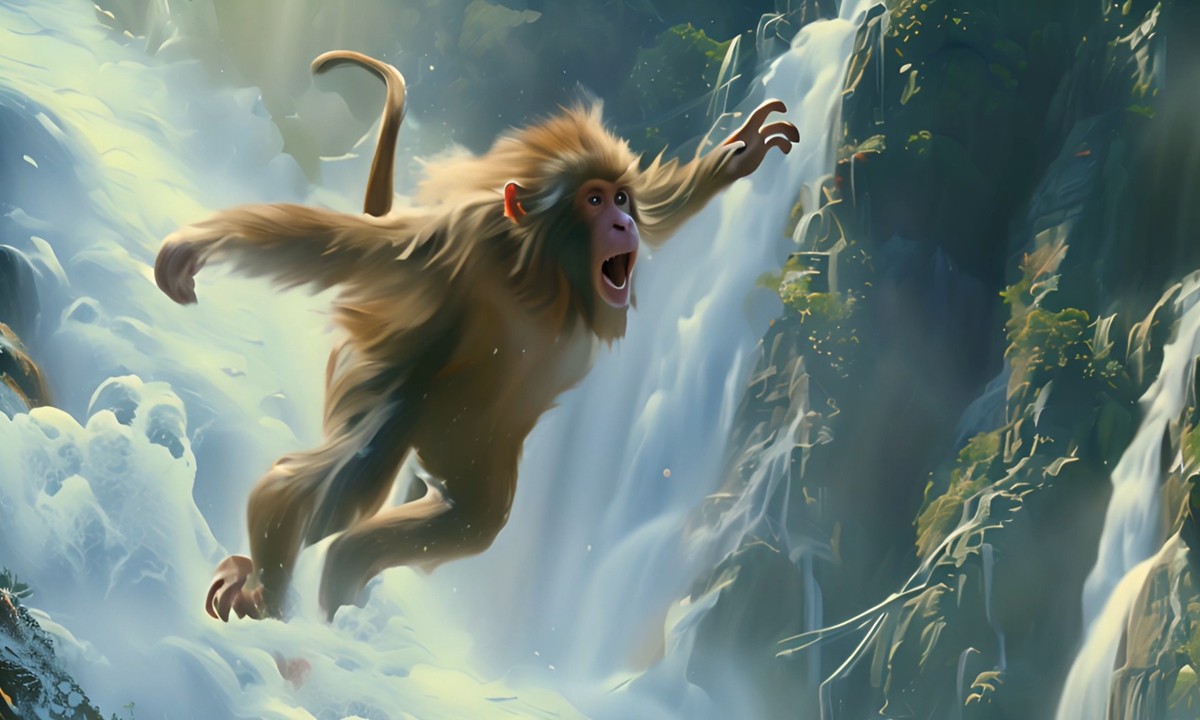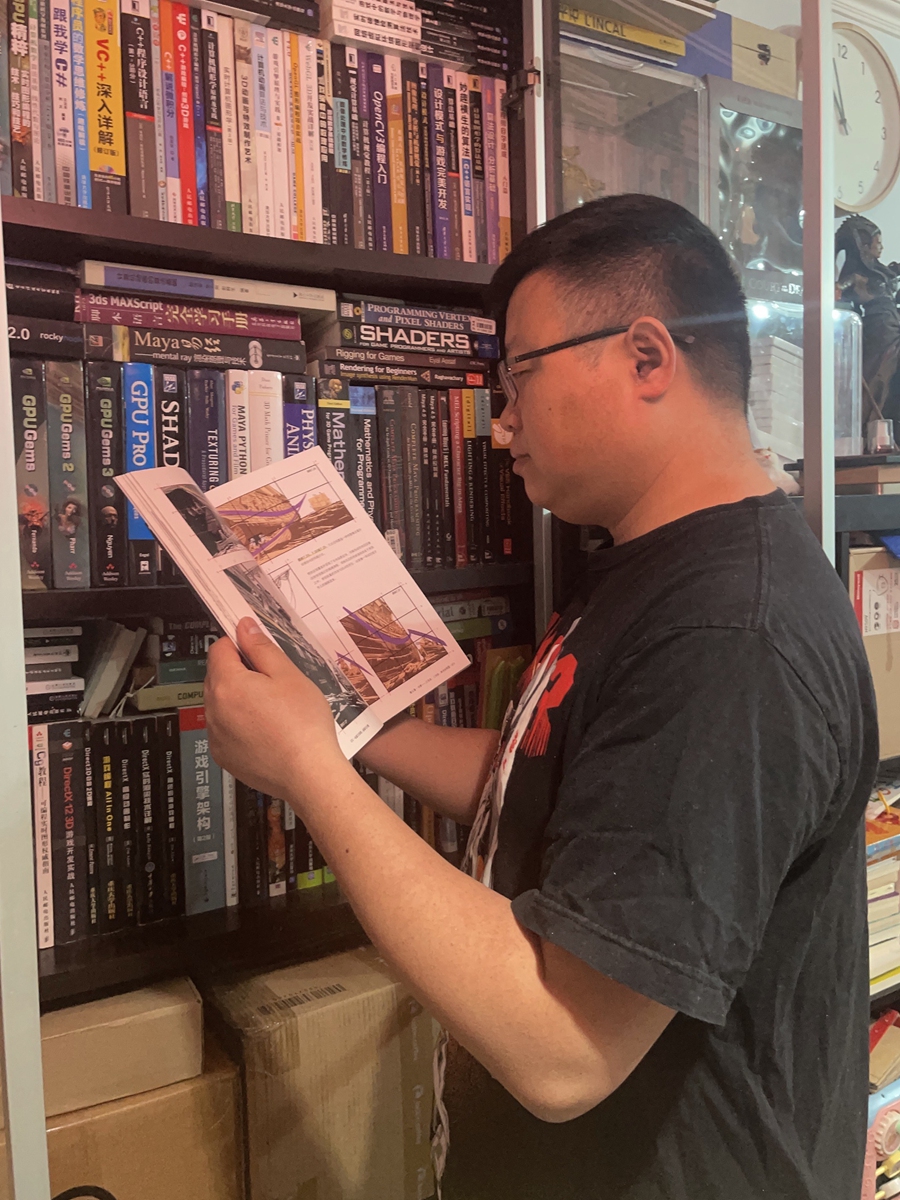
An AI-generated image from artist Feng Bin's animation Journey to the West Photo: Courtesy of Feng Bin
Almost 40 years ago, the costume drama Journey to the West debuted on Chinese mainland televisions. It has been one of the earliest and most recognized visual-audio interpretations of China's Ming Dynasty (1368-1644) literature of the same name till now.
The TV drama was produced with the trendiest special effects of the 1980s, by which fantasies in the literature were constructed into reality by mostly physical props such as cotton, fish tanks, and some other items that were considered rather dicey like a fire gun.
The drama that may look old-fashioned nowadays was featured as part of the lives of generations of Chinese viewers including Feng Bin, an animator who also falls for the novel's fantasies, but has learned to design virtual props through Artificial Intelligence (AI), the trendiest tool four decades later.

AI artist Feng Bin Photo: Courtesy of Feng Bin
'Never replaces mind'
The first episode The Birth of Monkey King of Feng's AI-generated animation series Journey to the West has recently become a blockbuster on the internet garnering more than one million views.
The 3-minute and 56-second animation is entirely made by AI, Feng told the Global Times.
He first used ChatGPT for analyzing the original literature and then allowed it to provide him with multiple "filming" plans that divided the whole story into different scenes.
For giving such texts the visual presentations, Feng carried on using graphic software like Midjourney to depict the story's characters and its environment. The Sky Palace surrounded with clouds looks solemn and mysterious. The Huaguo Mountain, home of the Monkey King, boasts greens, a waterfall in mist and of course the star monkey king that looks furry and with a pair of glittering eyes.
AI has so dramatically increased the productivity of the artist's project that he "only took one week to finish up such works that normally would take human beings half a year to process," Feng told the Global Times.
It all looks like AI has done all the job of the illustrator and has taken away creativity from mankind, yet it is not true.
For making the story "acceptable," Feng had only chosen around 100 photos of the more than 3,000 pictures AI generated about the story.
Feng said that it often happened that the AI could not "understand" what the creator meant or how the Chinese cultural quintessence enriched its ancient literature. He tirelessly gave commands to the machine about what a Chinese mythological monkey was like.
The process of generating the monkey character to fit into the original literature's context has gradually made him realize that human beings can eventually rein AI and "the vanguard tool is just an assistant that can never replace human mind."
Born in Nanchong, Southwest China's Sichuan Province, the 39-year-old artist told the Global Times that his intention for creating the AI project was neither about "showing off the technology," nor deliberately catering to the current AI designing trend. With its "assistant," Feng just wanted to revive the traditional Chinese culture.
"China's profound culture makes its language and literary arts appear to be obscure nowadays, especially to overseas fans. The AI art helps us convey our culture to the world in a more direct way," said Feng.
Bumpy journey
The year 2024 marks the 15th anniversary of Feng's pursuit of being an artist. To be an animator is an unusual career choice for the 39-year-old man who was once a policeman 17 years ago.
Just like anyone who has a dream in the heart, Feng was committed to his bumpy artistic journey by overcoming obstacles like financial restriction and his parents' nonchalance to his dream.
The more than decade-long creative job made Feng realize his passion is still about Chinese folklore and traditional culture.
In addition to his AI depiction of the Monkey King, Feng shared with netizens about his other projects that featured China's ancient Silk Road and the ancient Chinese legends titled Nine Sons of the Dragon.
"I have always been interested in Chinese mythology and reading various Chinese mythological books since I was a child. This explains the reason why I choose Journey to the West to start off my creative journey," Feng told the Global Times.
His AI artworks were well received by netizens on video-sharing platforms like Bilibili,which is crowded with mostly young fans.
By reading through netizens' supporting comments about his created "futuristic" Chinese animation, Feng told the Global Times that he will continue to work on more Chinese stories just like his next project about the Ming Dynasty novel Investiture of the Gods, or Fengshen Yanyi in Chinese that intertwines with folklores, legends and mythical creatures that were all rooted in ancient Chinese imaginations.



